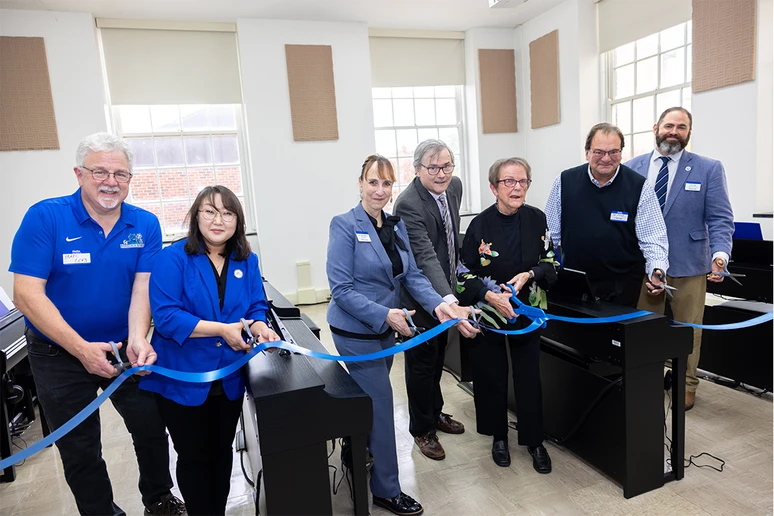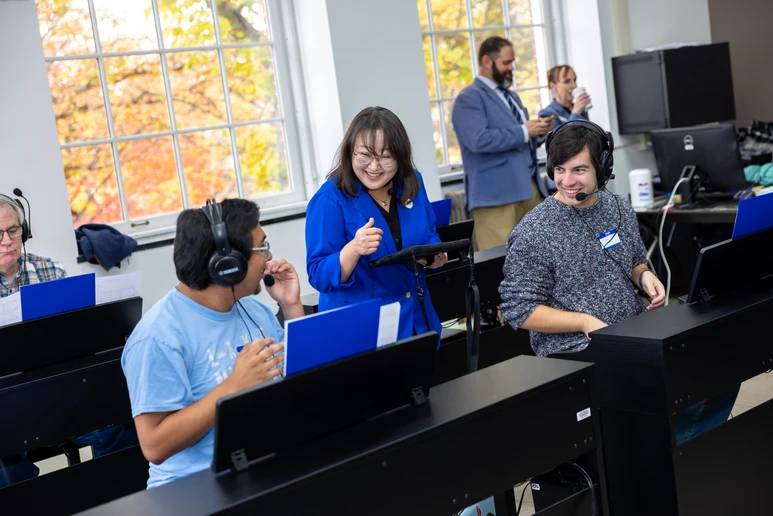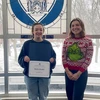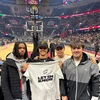Emeritus Professor Phyllis East (third from right) and Yamaha representative Dom Cicchetti (second from right) join the Piano Lab ribbon-cutting ceremony with (from left) Operations Manager Marc Levy, Assistant Professor Jiyong Kim Mai, Vice President for Student Affairs Tracy Stenger, SUNY Distinguished Professor James Davis and Fredonia College Foundation Major Gifts Officer Tim Smeal.
A new digital system has transformed a SUNY Fredonia piano lab into one of the most advanced keyboard labs anywhere.
The renovated piano lab consisting of 13 keyboards — one for the instructor and 12 for students — replaces an older analogue system that was high maintenance and prone to picking up external frequencies.
“After many consultations and extensive research, we found a complete digital system that solved our problems. SUNY Fredonia now has one of the most technologically advanced, state-of-the-art keyboard labs in the Northeast,” remarked Assistant Professor Jiyong Kim Mai. A well-attended official ribbon cutting ceremony introduced the new piano lab during Homecoming.
A team effort made the renovated lab a reality. SUNY Fredonia’s School of Music partnered with the Yamaha Corporation and the Piano & Organ Center, both of whom visited the school multiple times and conducted numerous tests to find specific solutions for SUNY Fredonia, explained Ms. Mai, coordinator of the Class Piano Area.
“The Yamaya MLC-200, an advanced lab and classroom controller system for group instruction, has transformed our setup.” - Assistant Professor Jiyong Kim Mai
Before the renovation, many students had difficulty focusing during class due to radio frequencies interfering with their headphones, but that issue has been fully resolved.
“The Yamaha MLC-200, an advanced lab and classroom controller system for group instruction, has transformed our setup,” according to Mai. It delivers crystal-clear digital audio and operates on its own dedicated wireless router designed exclusively for the lab.
Using a networked-audio infrastructure, the system links the instructor station with multiple student stations, enabling communication, monitoring, grouping and full control of student instruments.
“We are now able to play background accompaniment music in various styles [e.g., Gospel, Swing, Jazz] while we play our keyboards, making the experience much more enjoyable. Learning has become more efficient and interactive for our students,” Mai commented.






